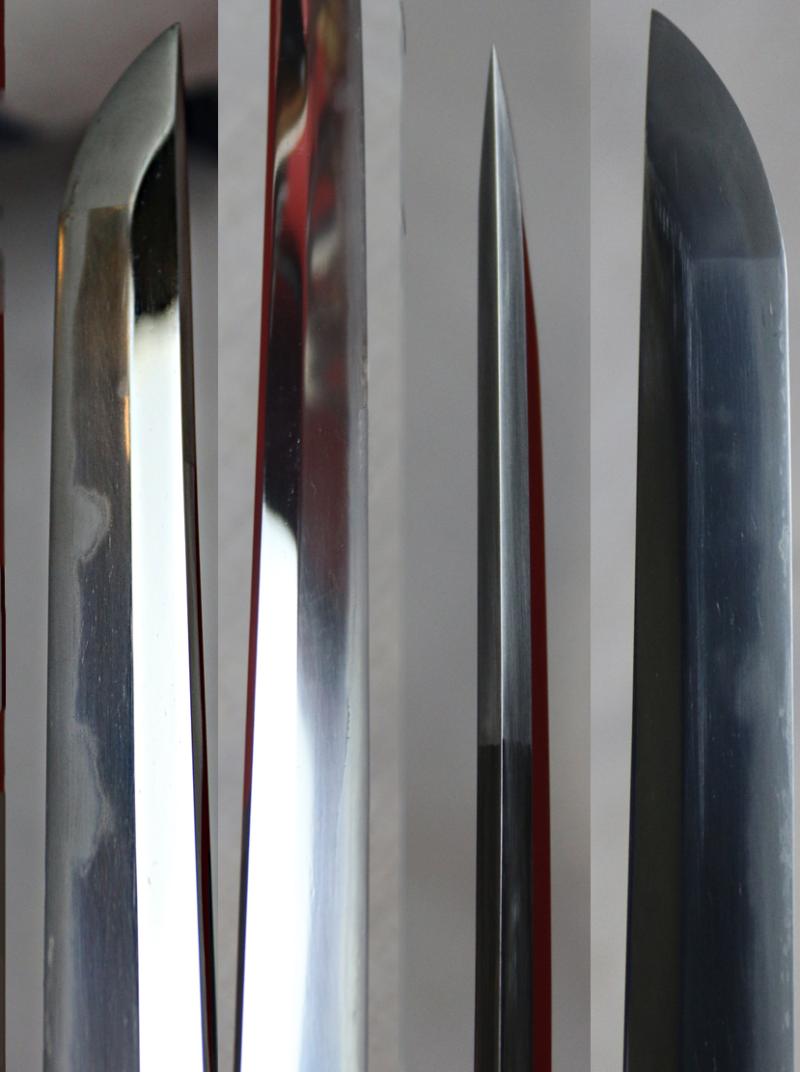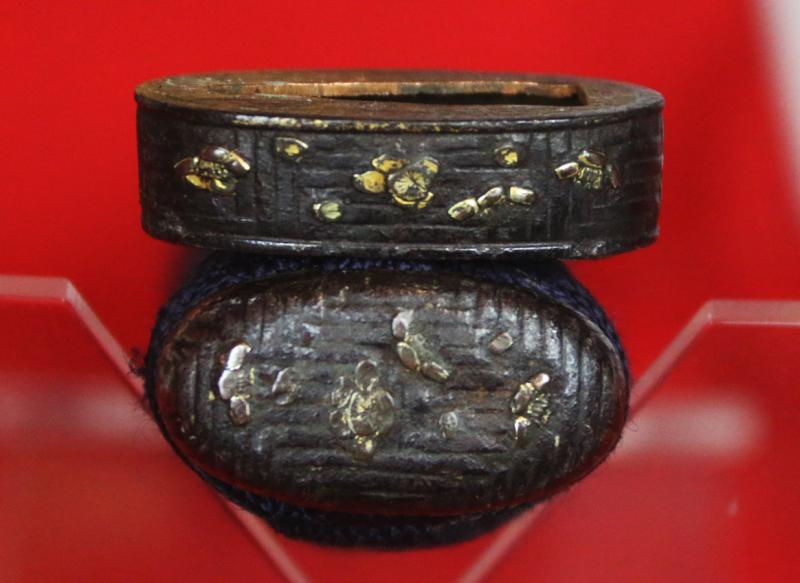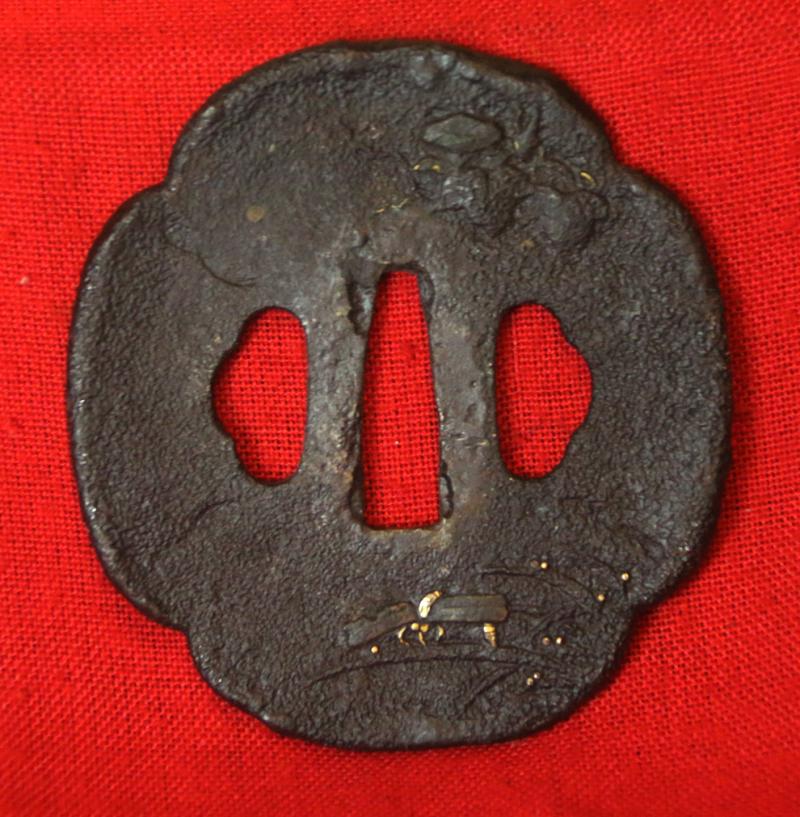A Stunning, Antique, Edo Period Shinto 'Dragon Horimono' Katana With A Carved Horimono Blade of a Dragon. With a Superb Suguha Hamon
Horimono, a type of carving, often adds other decorative Horimono to the blade in addition to grooves. The properties of horimono are usually traditional images, such as swords, dragons, deities, Buddhist patterns, bonji, Chinese characters, and so on.Among the blades of the Koto period of sword manufacture (1600), many of the carvings display religious meaning: Bonji (sanskrit), Su-ken, Fudo Myo-o,Kurikara, Sanko-tsuki-ken, Goma-bashi, Hachiman-daibosatsu, Namu-myoho-renge-kyo, and Sanjuban-shin.In the Shinto period of swordmaking (1600), the carvings become more decorative with depictions of cranes and turtles, ascending and descending dragons, shochikubai (pine, bamboo and plum), and the deity of wealth, Daikoku.These images are carved with hammers hitting small chisels of various sizes. The internal surface of horimono is ground smoothly and finely, and polished during the polishing process. Making horimono is both difficult and time-consuming; Swordsmiths mostly carve grooves and simple Sanskrit characters themselves, while the more magnificent horimono is made by specialized craftsmen. After deciding which image to use, carefully draw a detailed pattern with a brush at the position to be carved, and then complete the horimono. The ideal horimono has a moderate proportion, the size matches the word to be carved, and is engraved in the appropriate position
The decorative horimono were introduced during the Edo period on the katanas and are generally larger than the votive ones. They often depict a dragon, taking up traditional iconography but using superfine techniques to embellish the blade.
The saya has a split to repair and the binding is being restored so the katana’s availability will be only once the restored saya and tsukaito is completed.
Code: 25541
6650.00 GBP








